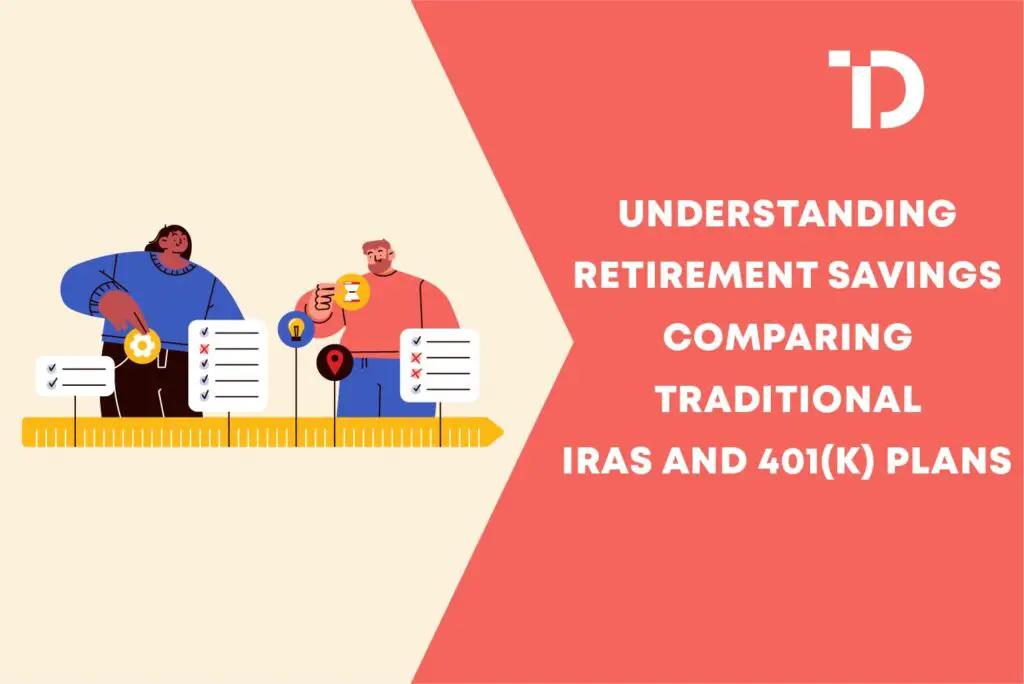Introduction to Retirement Savings Options
The journey to retirement can be as complex as it is individualized. Many savings instruments are available, ranging from stocks and bonds to real estate. However, for many, tax-advantaged vehicles like traditional IRAs and 401(k) plans are the cornerstones of retirement strategy. Understanding how 401(k) vs traditional IRA works, their respective benefits and potential limitations is essential for anyone looking to optimize their retirement roadmap.
The ABCs of Traditional IRAs
The Traditional Individual Retirement Account, commonly known as a Traditional IRA, is a hallmark of retirement savings. Eligible individuals can contribute pre-tax income, lowering their taxable income for the contribution year. This can result in a significant tax break upfront, potentially making more money available for compounding interest over time. Navigating contribution limits and understanding the nuances of this account type is necessary, as limits are often influenced by factors such as the individual’s income level and whether a workplace retirement plan covers them. A thorough understanding of these details can ensure maximum utilization of a Traditional IRA.
Decoding the 401(k) Plan
Named after the tax code section that governs them, 401(k) plans are equally pivotal in the retirement planning landscape. Unique to these plans is the potential for an employer match— an aspect that can effectively double a portion of an employee’s savings. While the investment selections may be more limited than those of traditional IRAs, the higher contribution limits of 401(k) plans and the simplicity of having deductions made directly from payroll make these plans highly desirable for many employees.
Eligibility Criteria: Traditional IRA vs. 401(k)
Eligibility for traditional IRAs and 401(k) plans centers around income and employment status. While traditional IRAs are generally accessible to anyone with earned income, 401(k) plans are contingent upon an employment relationship with an offering employer. Thus, freelancers and the self-employed may lean towards IRAs. At the same time, employees at companies offering 401(k) benefits may favor the latter for its higher contribution limits and potential for employer-matching contributions.
Tax Implications: A Comprehensive Comparison
Understanding the tax implications of these retirement accounts is critical in creating a tailored savings strategy. Contributions to traditional IRAs may be tax-deductible, potentially reducing current income tax liability while the investments grow tax-deferred until withdrawal. For 401(k)s, contributions are made pre-tax and reduce taxable income, further allowing investments to grow tax-deferred. However, withdrawals from both types of accounts during retirement are taxed as ordinary income. Keeping abreast of the evolving tax landscape, such as recent legislative changes, can be significant for long-term financial planning, necessitating that individuals stay informed on topics like tax implications of retirement savings.
Contribution Limits and Deadlines
Each year, the Internal Revenue Service sets contribution limits for both traditional IRAs and 401(k) plans, and it’s important to note that these limits often adjust for inflation. The 401(k) generally boasts higher contribution limits, widening the tax-deferred growth potential. Moreover, deadlines for contributions to a traditional IRA typically align with the tax filing date of the next year, incentivizing savers to keep a keen eye on the calendar to optimize their tax deductions.
Investment Choices and Flexibility
Regarding investment choices, traditional IRAs often offer a broader range of options, from individual stocks and bonds to mutual funds and beyond. In contrast, 401(k) plans are limited by the investment selections curated by the offering employer. For savvy investors seeking specific market exposure or those wishing for a more hands-on approach to their portfolio, a Traditional IRA might provide the investment agility desired.
Understanding Rollovers and Transfers
Life circumstances often change, prompting the need for financial adaptability. This is where understanding rollovers—and the strategic transfer of funds between retirement accounts without incurring tax penalties—becomes pivotal. Whether transitioning from an employer’s 401(k) into an IRA after a job change or seeking to consolidate funds for better management, knowing about rollovers can preserve the tax-deferred status of retirement savings.
Early Withdrawal Rules and Penalties
Long-term savings in a retirement account can sometimes beckon as a source of immediate funds, but early withdrawals can be costly due to penalties and taxes. Both traditional IRAs and 401(k) plans have stipulations for early withdrawals generally categorized as distributions taken before age 59½. Individuals must be conversant with these rules to avoid unexpected financial repercussions and maintain the integrity of their retirement plan.
Preparing for the Future: Which Plan Suits You Best?
The deliberation between a traditional IRA and a 401(k) is often laden with considerations of tax brackets, investment preferences, and the impact of potential employer contributions. Personal financial circumstances and goals are paramount in this decision-making process, so consulting with a financial planner can be invaluable. They can provide a broader perspective, aligning a chosen savings plan with individual anticipation for retirement.
